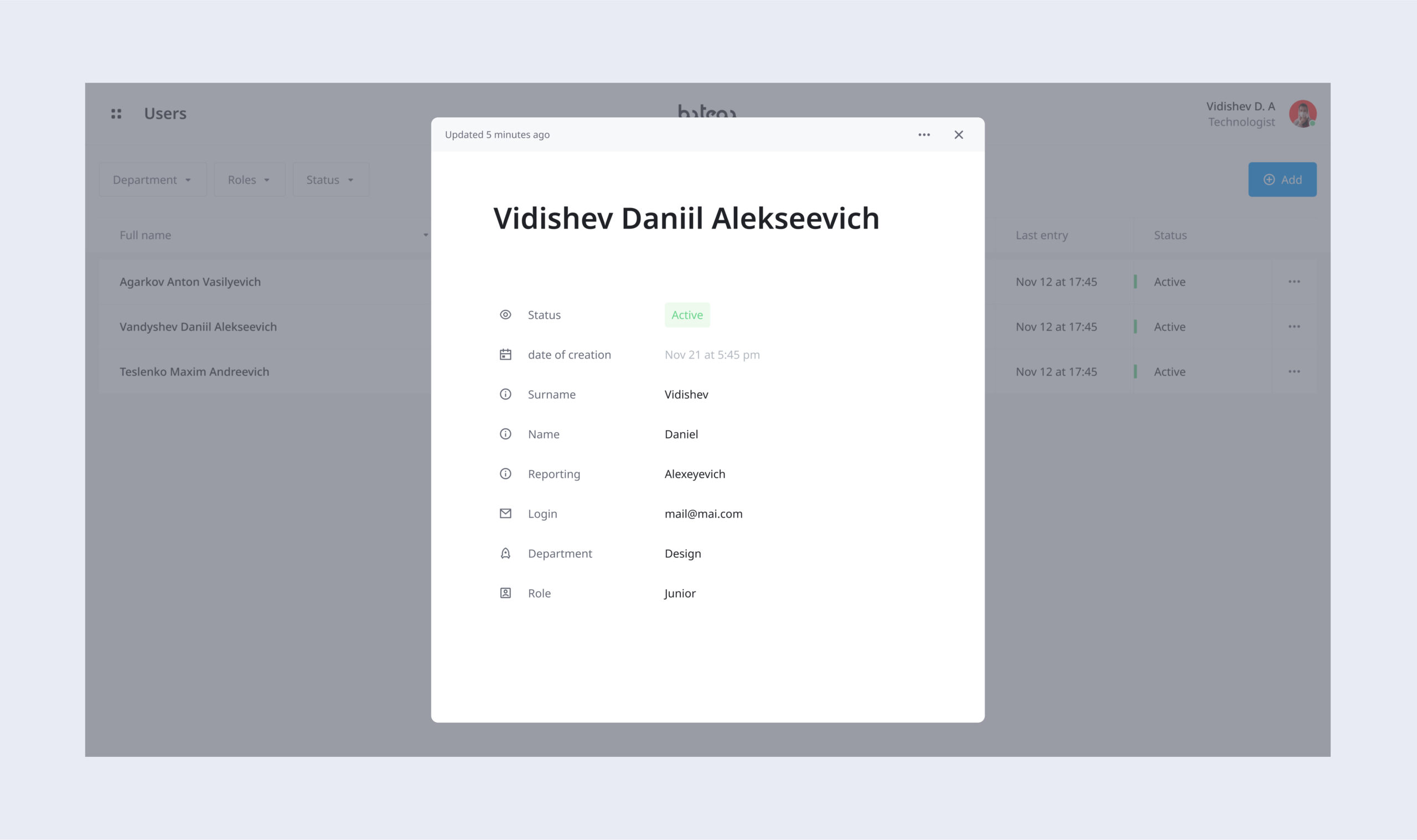We use cookies. They allow us to analyze the experience of visitors to our website and understand you better. By continuing to browse the website, you agree to our use of cookies.
Transition from Bitrix24 to a custom ERP
System for automating the Batega – construction materials business. Withdrawal from Bitrix24.
Goals
Get out of Bitrix24 and Google spreadsheets.
Our client used Bitrix24 as a main sales team manager software. Due to business specifics, they had to constantly add new features and customize interfaces with Bitrix developers.
Bitrix24 was good in working with customers but failed to provide convenient and intuitive communication with technologists and measurers in developing samples. In addition, it was impossible to make understandable constructor of samples and the final solution. Eventually, they hit the limit in terms of features, ease of use and speed. The system became inconvenient and incomprehensible.
Tasks
- Design a convenient sample constructor;
- Create a convenient assortment;
- Build a unified system for the employees;
- Develop a system without restrictions on features and scaling.
Stages of work
Analytics
An analyst set off to visit the client.
We prefer to work right in the office and production site of the client in order to experience the entire business process, communicate with real users, touch and feel the plaster, and see how it is applied.
Prototyping
First, we prepared prototypes. Designers often skip this stage and make edits at the design stage. However, we tend to focus on the structure of the service rather than its beauty. It helps us to minimize time-to-market pace and budgets, since prototypes are created and edited much faster.
We always show prototypes with just a black and white structure with simple shapes. Thus, the attention remains on the structure, not on the visual.
Communication between sales reps and technologists
Once a lead is generated, the application falls into our system. After that, it makes a long way from first-touch point with a sales rep, then the release of test samples, and finally applying plaster to the wall. We have developed a common dashboard for managers and sales reps who supervise the entire process and a separate dashboard for technologists, since they are only concerned about production updates.
After the request is received, the next stage is the test sample formation for a customer showcase. If the sample is approved, the plaster is being developed in large volumes:

All requests can also be displayed as a list:

The sales manager fills out an order for technologists to release a test sample. They chose the type of room from the directories – this is important, because it can be outdoors or premises with high humidity, such as bathrooms.
Next step, indicate where the color will be applied: walls or a floor. Marking the texture and protection according to the samples. Determining the color using the Pantone palette. The photos are attached as an example:

Then the orders go to the technologist. The technologist forms several layers through the constructor as per the attached order and specifies the consumables spent for accounting:
Each layer is created separately. Once it’s done, choose a color and a manufacturer. Ounces to millimeters are calculated by default. Next, fixing the number of decorative additives and specify the tools used for accounting:

The data for each layer is saved to the Articles block to avoid wasting time on identical samples creation:

The user rights are differentiated by departments:

We developed the Assortment block to account for the product range and its balance. The price is formed automatically depending on the dollar value. It’s also possible to enter all the data straight on the table for quick editing:

Now the history of changes for each cell is displayed:
All the technical information, necessary equipment for use, and instructions can be found within a neat and informative card
UI kit
We formed a UI kit for quick scaling and a single style for the entire system:

Price
We make estimations using Time & Material scheme.
We are not fans of “Talk to our sales team” to get the pricing. Here is the approximate price for a similar product. The final estimation depends on the integration systems and business specifics. We indicate the approximate cost of the team per month, but a project like this will take about 3 months.
Of course, for a small business, it’s often cost-effective to stay with Bitrix, even if it is not so convenient and neat. However, for fast-scaling businesses with many employees that require a powerful and convenient tool, it’s a profitable solution.


